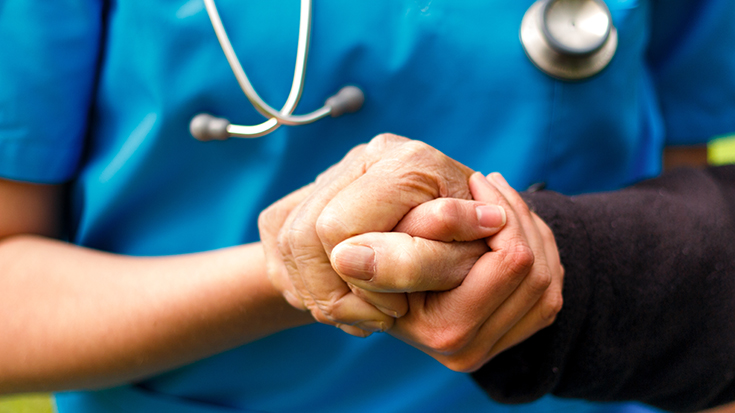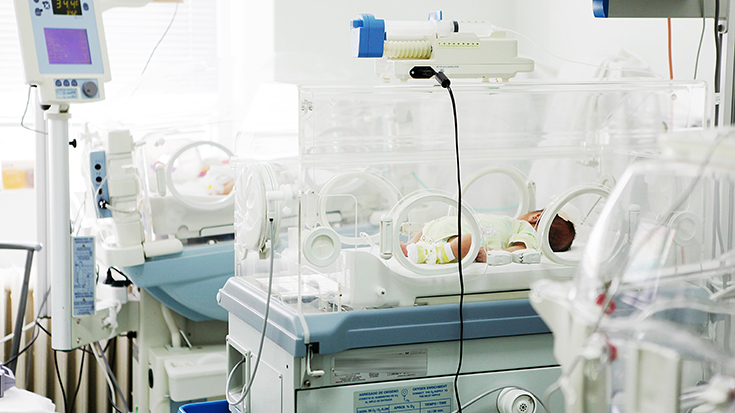
RTs have been running a hundred miles an hour for a whole year now due to the COVID-19 pandemic. Many places are feeling the burden of too many patients and not enough staff. Quality patient care is always a top priority for our members. But how does an RT continue to give excellent patient care when it feels like they’re giving 120 percent 100 percent of the time?
We spoke with AARC member Margie Pierce, MS, RRT, CPFT, who serves as the administrative director of respiratory care and pulmonary diagnostics at the Hospital of the University of Pennsylvania (HUP), to discuss tips on maintaining quality care during the pandemic.
What does quality patient care look like?
In most cases, the “quality” of something can be quite subjective; how does one set the standard for quality patient care? This definition can look different depending on several factors. However, Margie explains that there is a standard when it comes to the medical profession.
“High-quality care is care that is evidence-based and reliable,” Pierce said. “HUP RTs work within clinical protocols and guidelines to give the RT autonomy to manage the patients’ clinical conditions.”
For example, the ventilator liberation protocol at Margie’s facility allows RTs to begin the SBT process when the patient is ready, which reduces time on the ventilator. The bronchodilator protocol allows the RT to adjust therapy to ensure the patient receives the best therapy at the right frequency.
“We work to limit variability by having clinical leads in each of our ICUs who work with unit leadership to identify areas where quality improvement would benefit patient care,” Pierce said. “The multidisciplinary team approach allows each discipline to contribute their full expertise to deliver high-quality care.”
Make sure your plan can adapt
When creating a clear and concise plan for patient care, it is essential to make sure this plan is easily adaptable for unpredictable circumstances. The team needs to prepare for anything and everything.
COVID-19 required Margie’s organization to adapt operations due to the rapidly changing conditions. One example she gave was when they quickly adapted their management of ventilated patients with COVID-19. They were initially using heat moisture exchangers (HMEs) in all of their ventilator circuits to reduce health care worker exposure risk during the initial outbreak. However, it was quickly recognized that this process was not providing adequate humidification for the patients.
This led to thick secretions and several endotracheal tube obstructions. The rise in airway complications necessitated rapid adaptation while simultaneously implementing multiple interventions.
“The University of Pennsylvania Health System (UPHS) critical care committee collaboration enabled us to achieve efficient adoption of new clinical processes related to airway management,” Pierce said. “We conducted shift-to-shift safety huddles to implement the guideline changes.”
Also, the team has an ICU Liberation dashboard that includes real-time data and suggests interventions for ARDS metrics, ventilator liberation, and airway management. The team uses the Penn E-Lert (virtual ICU) to scale up new recommendations with high reliability.
Managing at a greater capacity
How does a team manage a greater capacity of patients? The team at Magie’s hospital managed this issue quickly by redeploying staff at the start of the pandemic. Pulmonary function and pulmonary rehabilitation staff received orientation and training to work in the acute care environment.
“HUP RTs trained certified registered nurse anesthetists (CRNAs) on critical care ventilator management, and they worked alongside RTs in the ICU functioning as RT extenders,” Pierce said.
The team engaged their ICU telemedicine program to aid with ventilator management and extubation protocols. Virtual RT support delivered by RTs working remotely provided an additional layer of safety.
Working through workflow issues
“Workflow issues that surfaced amidst the pandemic were addressed quickly in real-time,” Pierce said.
Margie shared an example related to high patient volume. Due to this issue, equipment needed to be stocked more frequently, RTs needed ventilators and other equipment reprocessed, and temperature probes needed high-level disinfection. The HUP RT department trained the hospitals’ sleep technologists to assist the RTs with equipment management.
“Without their help, the burden would have fallen to the already busy bedside clinician to manage the reprocessing,” Pierce said. “We developed great relationships with the sleep team, and their help contributed to great patient care.”
A shifting mindset
To continue to deliver quality care, the RTs needed to shift their mindset and focus on activities that added value to patient care and let go of tasks that didn’t. For example, allowing the virtual RT to observe your patients and alert the bedside RT if when needed in a patient room was a necessary mindset shift.
Many times, RTs will assess patient ventilators every four hours regardless of if it is necessary. During the pandemic, the virtual RT evaluated ventilators to allow the bedside RT time to do the required tasks in the room.
“Divergent thinking is what contributed to our success,” Pierce said. “We had a team of multidisciplinary clinicians who met daily to find solutions to emerging problems. We strategized daily with physicians from sleep, pulmonary, the home ventilation clinic, and telemedicine who helped us succeed by leveraging all the tools available within our health system in ways that were not explored before.”
A final word of advice
“When faced with challenges, the best solutions come from a multidisciplinary team,” Pierce said. “Once decisions are made, an effective communication strategy is necessary. We rely on shift-to-shift huddles to disseminate information rapidly. I find that staff prefer this rapid form of communication because they do not have to stop and read an email or search for updates. It also gives them an opportunity to ask questions when we meet face-to-face.”
Email newsroom@aarc.org with questions or comments, we’d love to hear from you.















